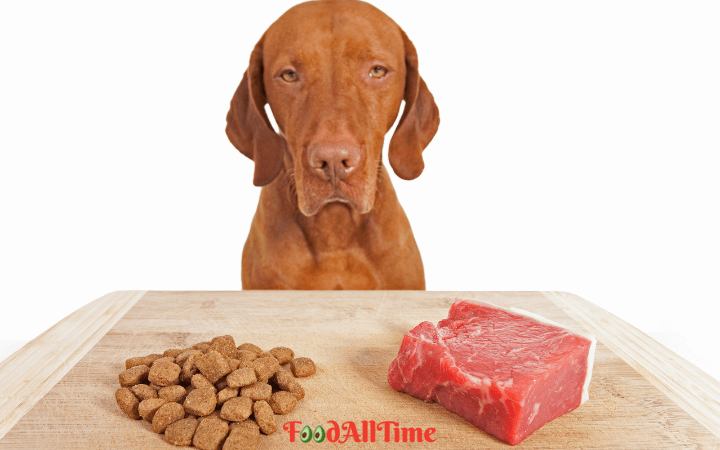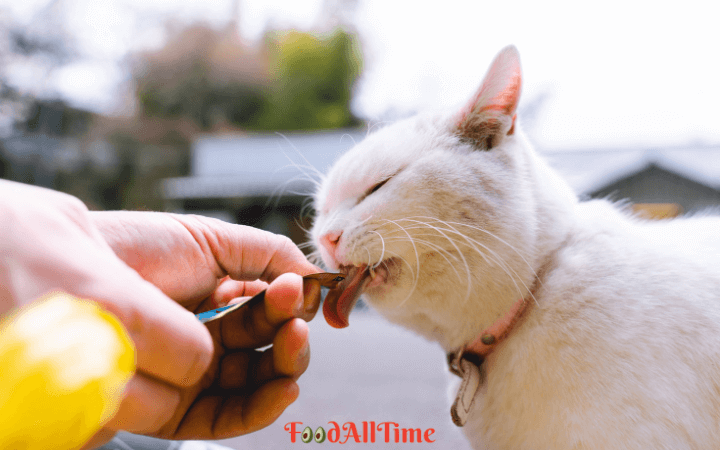Affiliate Disclosure: Every purchase made through our affiliate links earns us a pro-rated commission without any additional cost to you. We may earn an affiliate commission if you order any product. Here are more details about our affiliate disclosure.
How To Prepare Best Homemade Dog Food | A Beginner’s Guide to Home Cooking for Dogs
Increasingly, dog owners are opting to prepare their own dog food at home after learning of recalls and changing information about commercial dog food.
Although dogs love home-cooked food, the process is not the same as cooking a meal for yourself or your family. Here are some guidelines to keep your pet healthy.
Homemade Dog Food: Is it Safe to Feed a Homemade Diet?

There is no risk of dog food recalls with homemade diets because the ingredients can be controlled. Many people are also trying to eat healthier and they want the same for their dogs.
People prefer homemade diets because they contain whole food ingredients that are generally considered healthier than processed dog food.
Some people are not comfortable making their own dog food. Before you switch to a homemade diet for your dog, there are a few things to think about.
- Ensure that the dog food recipe you choose is balanced and complete. Feeding your dog an incomplete or imbalanced diet is one of the biggest mistakes you can make.
- Preparing food correctly and measuring ingredients takes time. Make sure that you have enough time in your schedule to make your dog’s food regularly.
- Don’t make your own dog food unless you can afford the ingredients. Homemade dog food is usually cheaper than commercially prepared fresh or raw food, but it usually costs a bit more than kibble.
- You might need to source multiple recipes if your dog is picky, so you can change his diet periodically to keep him on his toes.
Homemade Dog Food: How To Feed Your Dog Proper Nutrition Food

In order for dogs to thrive, their nutritional needs need to be met. As dogs have different nutritional needs than humans, you can’t exactly start feeding your dog your dinner.
The consumption of an incomplete or imbalanced diet can result in vitamin and nutrient deficiencies in dogs.
Dogs need adequate calories to meet their energy needs. You can ask your veterinarian how many calories your dog needs per day based on his age and activity level.
Ideally, a portion of homemade dog food should contain an appropriate balance of protein, carbohydrates, fiber, and fat.
To ensure that food is complete and balanced, vitamins and minerals must be added.
- Proteins such as chicken, turkey, fish, and lean beef should make up at least 10% of the diet
- Rice, pasta, potatoes, and other carbohydrates provide up to 50% of the daily calories (in addition, provide some fiber)
- Fresh vegetables such as green beans, carrots, and peas contain 2.5-4.5% fiber
- A minimum of 5.5% fat, usually in the form of vegetable oil
- Vitamin and mineral supplements (dog-specific; available from reputable companies).
Before beginning to prepare food for your dog, you must consult your veterinarian. If your veterinarian has any recipes, you can try them.
A veterinary nutritionist or a veterinarian who specializes in canine nutrition may be able to help.
Homemade Dog Food: What to Watch Out For
- If you switch to homemade dog food, watch your dog closely.
- Stay in touch with your veterinarian if you notice any changes, whether they are good or bad.
- Keep track of your dog’s weight and body condition over time for the best results.
- Ensure that you weigh your dog every week and contact your vet if you observe an unintended weight change.
- If by chance your dog is allergic to an ingredient, it may experience vomiting or diarrhea. Please notify your veterinarian if your dog experiences any of these symptoms.
Homemade Dog Food: A Guide to Making Dog Food

When you prepare a diet at home for your dog, ensure your recipe is both balanced and complete.
Once you and your veterinarian have selected an appropriate recipe, it’s time to get started.
- To start, make sure you have a food scale, food processor, pots and pans, as well as containers or bags for portioning the food.
- Don’t use canned, seasoned, or heavily processed ingredients, but rather fresh, high-quality ingredients.
- Prepare an area of the kitchen that is free of foods that may harm your dog.
- Prepare the ingredients by measuring them out. To ensure accuracy, use a food scale.
- Prepare ingredients according to the recipe
- Combine food and supplements properly (preferably, blend ingredients in a food processor).
- Food should be placed in containers and stored in the refrigerator or freezer.
- As a general rule, refrigerated food stays fresh for three to four days. Frozen food is best consumed within two months. Do not feed a homemade dog food that has been in the freezer for more than six months.
Owners often prepare food in bulk and refrigerate or freeze it in pre-portioned containers.
The idea of saving time and money is great, but you might want to start by making smaller quantities to see how the diet works for your dog.
Homemade Dog Food: What are the Options?
There is no substitute for variety! When you cook at home for your dog, you can offer him flavors and textures that commercial food cannot provide.
Additionally, it contains a variety of vitamins and minerals that you might not find in a bag of dog food.
As you mix and match ingredients, you can offer your dog a variety of flavors while meeting his nutritional needs. In addition, your pup will be delighted!
The entire food your dog eats doesn’t need to be prepared by you. Additionally, you can mix healthy commercial dog food with your own healthy ingredients.
You might like to read our article 53 Best Things Your Dog Can Eat | Things Your Dog Cannot Eat | Human Foods Dogs Can and Cannot Eat.
Homemade Dog Food: Dog Food Add-Ins
The following are some good options if you prefer to feed your dog kibble with add-ins:
- You can give a whole egg raw or cooked.
- A can of salmon that’s been cooked
- Raw or steamed mixed vegetables
- A small amount of cottage cheese or yogurt
- Green vegetables such as kale or spinach (help digest kibble)
Homemade Dog Food: Making the Switch

You should remember that most dogs can’t switch from store-bought food to home-cooked food overnight. Ideally, you should transition slowly over a period of six days to a week.
Day 1 – Combine 20% of the new food with 80% of the old.
Day 2 – Combine 40% of the new food with 60% of the old.
Day 3 – Combine 50% of the new food with 50% of the old food.
Day 4 – Combine 60% of the new and 40% of the old food.
Day 5 – Combine 80% of the new food with 20% of the old food.
Day 6 – 100% of the new food should be fed.
You should watch out for signs of illness like diarrhea, vomiting, or lack of appetite. If your dog exhibits digestive issues, you can either back off the transition, find out what foods your dog has an issue with or contact your veterinarian.
Homemade Dog Food: One Size Fits All?

Chihuahuas and Great Danes eat very differently. With home-cooked dog food, volume and calories still matter, so it’s important to know what you’re feeding your pet.
Until you become more familiar with portions, the best way to start is to look up recipes that include ingredient information online.
Make sure to show your veterinarian the recipes you’ve prepared (or plan to prepare) so they can ensure that they meet your pup’s needs.
Make sure your dog gets the right amount of calcium, phosphorus, and other minerals by asking your veterinarian for a multivitamin supplement and a mineral supplement.
Make sure your pup stays healthy by weighing them regularly. Weigh them at home or have them weighed at the veterinarian.
Consult your veterinarian if you are not sure what a healthy weight range for your dog would be.
Making tasty dog food at home is also a healthy way to help your dog lose extra pounds is also to prepare tasty dog food at home.
Our recommendation is not to obsess over calories, just to ensure your pup’s health stays on track.
Homemade Dog Food: Allergy Alternatives

Finding the right balance when switching to home-cooked may take some time, but it isn’t overly complicated. However, many dogs have individual food preferences and allergies.
To start, you will need to watch for allergies to certain ingredients in the food. We at FoodAllTime encourage and supports pets in eating healthy diets.
Homemade Dog Food: A Word of Caution
- Please consult your holistic veterinarian before changing your dog’s diet to ensure the changes are compatible with your dog’s current health.
- Before changing your dog’s diet, weigh your pet. You will be able to adjust quantities if they lose or gain too much by having a baseline; tracking their weight.
- Dogs’ food requirements are affected by their activity level, age, and their overall health.
- For dogs under a year old, we don’t recommend a home-cooked diet since they could develop significant bone abnormalities if not given the correct amount of calcium and phosphorus.
You Might Like To Read
- Home Prepared Breakfast For Your Dogs And Cats
- 53 Best Things Your Dog Can Eat | Things Your Dog Cannot Eat | Human Foods Dogs Can and Cannot Eat
- Best Home Prepared Healthy Chicken And Vegetable Stew For Dogs And Cats
- Best Home Cooked Chicken and Rice Diet For Your Cat
- Homemade Cat Food Recipe With Tuna And Rice
- Turkey And Vegetable Best Home Cooked Food For 9 Kg Dogs
Commercial Dog Food

Product Name: Taste of the Wild Dry Dog Food Pacific Stream Canine (Smoked Salmon) 5.6-Kg
Product Description: All the animal protein in this egg-free recipe comes from fish, so it's rich in omega fatty acids, which keep skin and fur healthy and glossy and may be a good choice for dogs with food sensitivities. The sustainably sourced, smoked salmon taste will satisfy any dog's inner wolf, while the carefully selected ingredients provide the ideal nutrition for adult dogs.
Brand: Taste of the Wild
GTIN-8: B085SQJ5P3
Offer price: 4,350
Currency: INR
Availability: InStock







